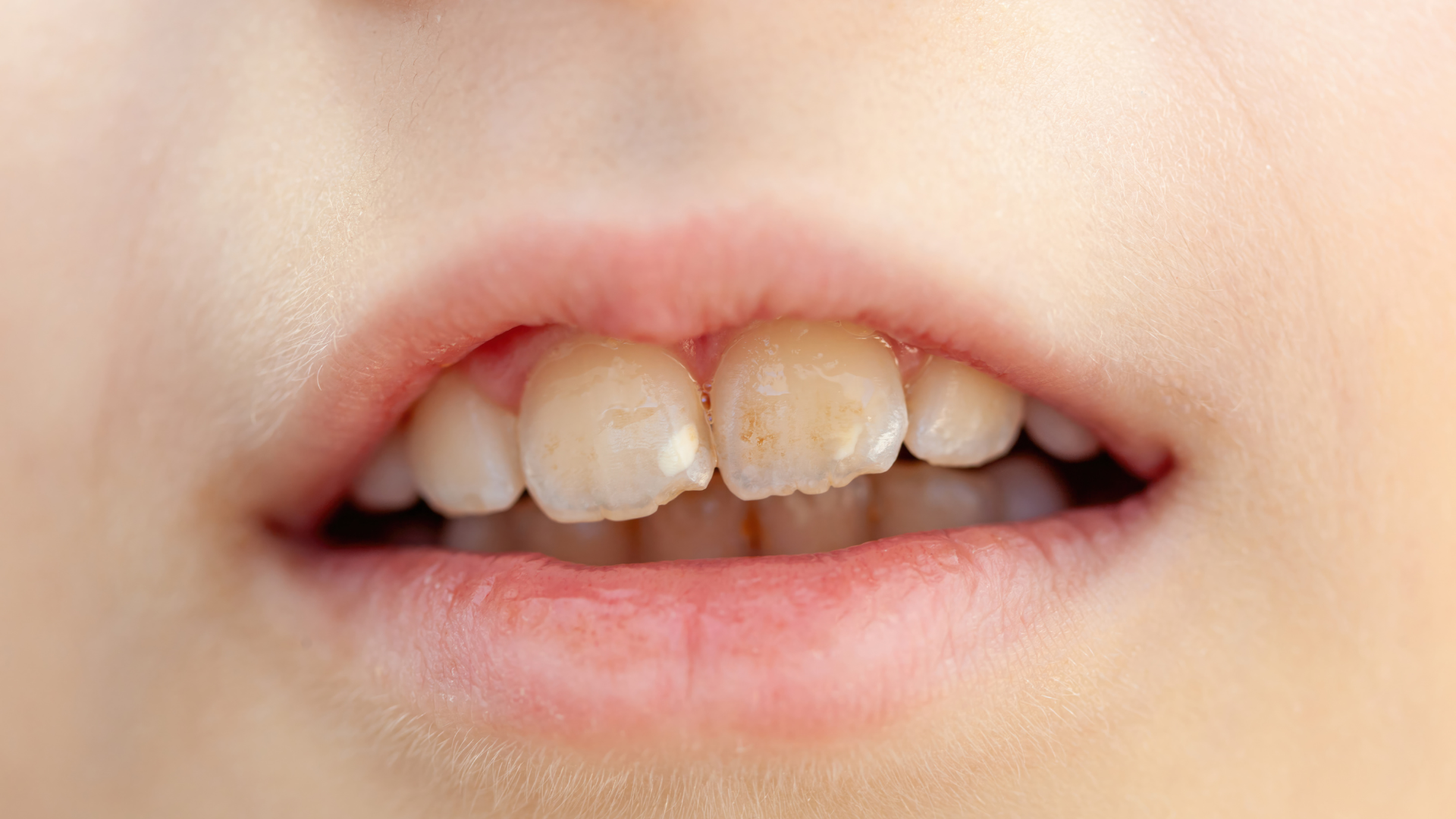White Spots on Teeth: What They Mean and How to Get Rid of Them Safely

Have you ever noticed white patches on teeth that weren’t there before? You’re not alone. These chalky spots, often appearing on the front of your teeth, can be a cosmetic concern, but they may also signal underlying issues like enamel damage, mineral loss, or even early tooth decay.
In this blog, we’ll explore the most common causes of white spots on your teeth, when to worry, and what treatment options can restore the natural appearance of your smile. Whether you’ve had these marks for years or just spotted them recently, understanding their origin is the first step toward addressing them.
Why Do You Have White Spots on Your Teeth?
If you’ve asked yourself, “Why do I have white spots on my teeth?” The answer depends on a few different factors. While these white marks on teeth may seem harmless, they often reflect a disruption in the normal development or integrity of your tooth enamel.
Here are some of the most common causes:
1. Demineralization (Early-Stage Decay)
The most frequent cause of white discoloration on teeth is enamel demineralization. This happens when acid-producing bacteria weaken the enamel by stripping it of essential minerals like calcium and phosphate. You’ll often see this on the front teeth, especially if oral hygiene has been inconsistent.
White spots that appear after braces come off are usually a sign of enamel demineralization.
2. Fluorosis
While fluoride is essential for protecting teeth, too much fluoride during early childhood can lead to a condition called dental fluorosis. This typically results in white marks on teeth, especially if a child swallows toothpaste frequently or drinks heavily fluoridated water during the years when permanent teeth are developing.
3. Enamel Hypoplasia
This developmental condition occurs when enamel doesn’t form properly, resulting in thinner, weaker areas. Hypoplasia can be caused by high fevers in infancy, poor nutrition, or trauma to the mouth. These white patches on teeth may appear alongside pits, grooves, or other irregular textures.
4. Bleaching or Whitening Sensitivity
Occasionally, white spot on tooth areas can become more noticeable after whitening treatments. While the surrounding enamel lightens, white spots may remain more prominent until the color blends again over time.

Are White Spots on Teeth Harmful?
In many cases, white marks teeth are purely cosmetic. However, when caused by demineralization or enamel weakness, they can increase your risk of cavities and long-term damage if not addressed.
That’s why it’s important to talk with your dentist, not only to restore your smile’s appearance but also to understand the health of the enamel beneath.
How to Treat White Spots on Teeth
Treatment depends on the underlying cause and the severity of the discoloration. Here are the most common professional and at-home options:
1. Fluoride & Remineralizing Treatments
Topical fluoride applications or remineralizing agents (like calcium phosphate pastes) can help strengthen weakened enamel and reduce the appearance of white discoloration on teeth caused by early demineralization.
2. Microabrasion
In-office microabrasion gently removes a thin layer of enamel to even out the tooth’s appearance. This is especially helpful for superficial white patches that haven’t penetrated deeply.
3. Resin Infiltration (ICON Treatment)
A popular modern solution, resin infiltration fills porous enamel with a clear resin, blending the white marks on teeth with the surrounding color. It’s minimally invasive and often completed in one visit.
4. Professional Whitening
Whitening the entire tooth surface can sometimes help white spots on teeth blend in more naturally, though it’s not always the best first step. Whitening should only be done under dental supervision, especially if you already have noticeable discoloration.
5. Dental Bonding or Veneers
For severe or widespread white discoloration on teeth, cosmetic solutions like tooth-colored bonding or porcelain veneers may be recommended to completely cover and reshape the affected teeth.
Can You Prevent White Spots from Forming?
Yes, especially if the cause is related to hygiene or early demineralization. Here’s how you can protect your enamel and reduce your risk of developing white marks on teeth in the future:
- Brush twice a day with a soft-bristle brush and fluoride toothpaste.
- Floss daily to remove plaque between teeth.
- Avoid acidic and sugary foods, which feed bacteria that erode enamel.
- Use fluoride appropriately, especially with children (a pea-sized amount of toothpaste is enough).
- See your dentist regularly for cleanings and checkups.
- If you have braces, be especially diligent with brushing to avoid permanent marks after removal.
Related reading: How to Maintain Your Oral Health Between Dental Visits
When to See a Dentist
If you’ve noticed new white spots on your teeth, or if they’ve become more pronounced over time, it’s worth bringing up with your dental provider. While some spots are harmless, others may signal the beginning of enamel breakdown,and early treatment can make a big difference in both health and appearance.
Restore Your Smile with West Soho Dentistry
At West Soho Dentistry in New York, we understand how even small changes in your smile can impact your confidence. Whether you're dealing with cosmetic white patches on teeth or more serious enamel concerns, Dr. Joanne Oh offers personalized, professional solutions to help you feel great about your smile again.
We use modern, minimally invasive techniques and a compassionate approach to restore your teeth and your confidence.
Located in NYC and accepting new patients. Schedule your consultation today!


.png)